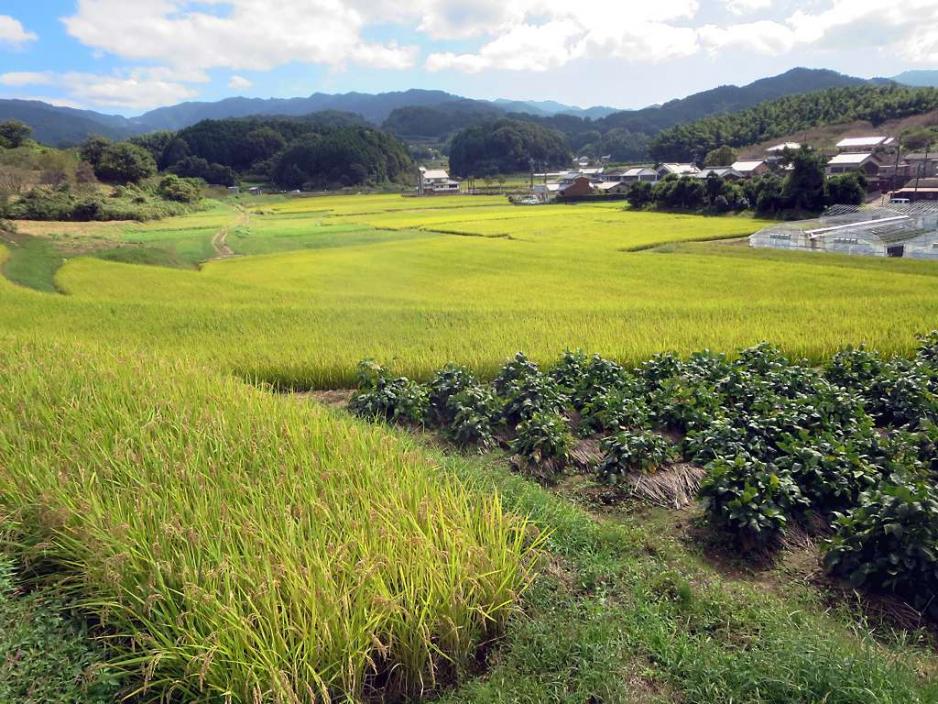The Arctic Cooling that Never Was: Ancient Farming Prevents Glacial Period

5,000 years ago, humans first altered our planet’s landscapes to plant wheat, harvest rice, and raise livestock. Unknowingly, they also prevented a new ice age and forever changed Earth’s climate.
This month the National Snow and Ice Data Center will release the Arctic sea ice measurement at minimum extent for 2018, the smallest area of the Arctic Ocean covered with ice this year. While industrial greenhouse gas emissions are the root cause of global climate change today, a new study has found that ancient farming is partly to blame for the future ice-free Arctic.
The study, published in the peer review journal Scientific Reports, suggests that ancient farming increased carbon dioxide and methane emissions enough to steer the global climate off its natural course. Without humans flooding of paddies for rice, razing forests for maize, and rearing animals for meat, the planet would have likely been headed for another ice age by the start of the Industrial Revolution in 1850.
“Our findings suggest that the present-day climate would be much colder in the absence of carbon emissions from human activities” Lead Author Dr. Stephen Vavrus, a professor at the University of Wisconsin Madison, told High North News. “Ancient farming alone accounted for a significant amount of the artificial warming of Earth’s climate that we experience nowadays”
A New Model Challenges Old Findings
To determine that early carbon dioxine and methane emissions may have prevented the spread of glaciers that had happened in previous solar cycles, Dr. Vavrus and his team used a sophisticated global climate model. The model helped them “to simulate a past climate of nearly 800,000 years ago that was probably very similar to how our contemporary climate would be, if not for the artificial warming caused by carbon emissions from ancient farming and modern industrialization.”
“We know of only one other such modeling study that has simulated this time period,” Dr. Vavrus explains, “but the climate model we used has much finer resolution to more realistically represent processes important for climate. These include atmospheric and oceanic circulation patterns and small-scale variations of temperature and precipitation over mountains that are important for the development of glaciers.”
Ancient Farmers Change Path of Arctic Cooling
The Arctic was of particular interest to the international team’s study of ancient farming greenhouse gas emissions.
The research found that the Arctic experienced much stronger cooling in an earlier period known as the Marine Isotope Stage 19c (~770,000 years ago) when compared with the late Holocene (1850), after several centuries of human farming, leading them to conclude that humans who began flooding fields, planting grain, and rearing animals 5,000 years ago suppressed an increase in Arctic snow and ice cover.
“Our results indicate that the Arctic is a very sensitive part of the global climate system, due in part to the amplifying effects from snow- and ice cover,” Dr. Vavrus notes. “Even though our study focused on a colder-than-present climate, the findings underscore that the climate of the Arctic changes much more than does the global average. This result suggests that future global warming will cause a lot greater temperature increase and associated impacts in the Arctic.”
More Research Need to Understand 21st Century Climate Change
The next step for Dr. Vavrus and his team will be to model the continuous progression of Earth’s climate during the past 6,000 years. One experiment they will conduct “will try to reproduce how global climate actually unfolded over these millennia, and the other aims to simulate how global climate would have unfolded in the absence of ancient farming.”
With the steady decline of Arctic sea ice, a better understanding of its causes is pressing. “Our climate model simulations suggested the beginning of significant glacial advances in the Arctic if the contemporary climate were ‘natural,’” Dr. Vavrus explains how farming is connected to the climate changes we see today. The Third U.S. National Climate Assessment reports that the Arctic Ocean is expected to be ice free in summer before 2015, with some estimates putting it closer to 2030. Models that best match historical trends project a nearly ice-free Arctic in the summer by the 2030. Dr. Vavrus’s new work will uncover just how much of our ice-free future can be attributed to ancient farming.
And, as always, what happens in the Arctic doesn’t stay in the Arctic. “This kind of major cooling of the Arctic would also spill into middle latitudes and promote cooling there as well,” Dr. Varvus concludes. So as people across the world brace for a warmer-than-average fall season, we can (partly) blame our farming forefathers.
